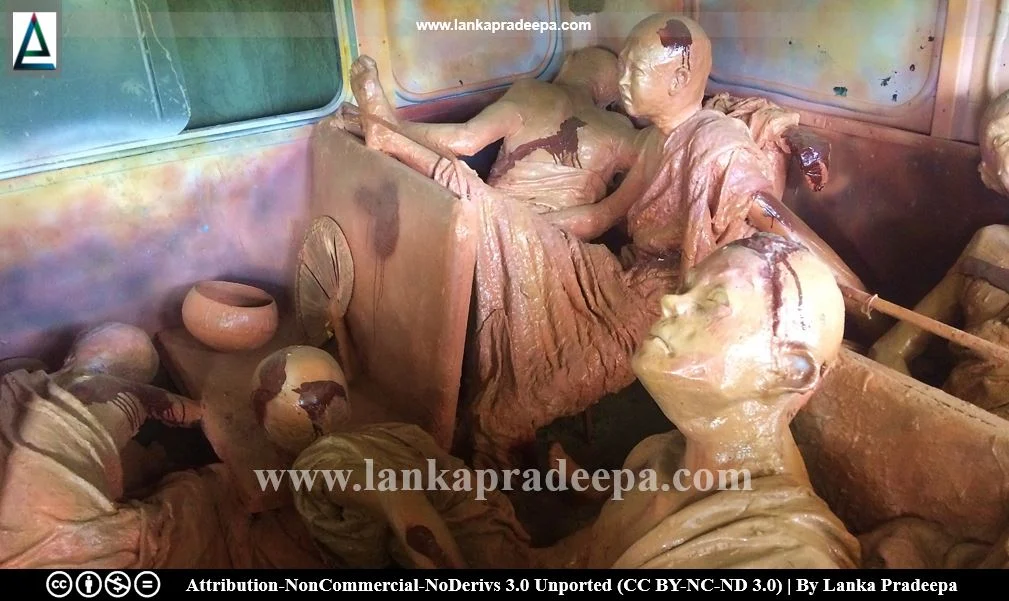
Memorial of Aranthalawa Massacre, also known as Monument of Aranthalawa Buddhist monks (Sinhala: අරංතලාව භික්ෂු ඝාතන ස්මාරකය), is a memorial site situated in the village of Aranthalawa in Ampara District, Sri Lanka. It has been built to commemorate the killing of thirty-one Buddhist monks and three civilians in the village of Aranthalawa on 2 June 1987, by the cadres of "Liberation Tiger of Tamil Eelam" (LTTE), a Tamil secessionist group designated as a terrorist organization by a number of countries including India, the United States and the European Union (DeVotta, 2007; McCargo & Senaratne, 2020). The "Aranthalawa massacre", as this incident came to be known, is considered an event of violence that made clear the LTTE's capacity for ruthless action (Das et al., 2000).
Buddhist monks of the Theravada tradition are incapable of defending themselves. Therefore, the harming of monks is considered to be one of the great offences in Buddhism.
Buddhist monks of the Theravada tradition are incapable of defending themselves. Therefore, the harming of monks is considered to be one of the great offences in Buddhism.
The incident
On 2 June 1987, a group of Buddhist monks (most of them were young novice monks) boarded on a bus from the Mahāvāpi Temple in Ampara for a pilgrimage to Kelaniya Raja Maha Viharaya (Deegalle, 2009). They were stopped near the village of Nuwaragalatenna by a group of armed LTTE cadres led by a leader named Reagan (Das et al., 2000). They ordered the driver of the bus to drive into the nearby Aranthalawa jungle and after the bus stopped, the LTTE cadres murdered 30 young novice monks and their mentor, Hegoda Indrasara Thera (DeVotta, 2007). Three civilians who were on the bus were also killed by the attackers.
A few monks, however, escaped the massacre sustaining critical injuries.
A few monks, however, escaped the massacre sustaining critical injuries.
Memorial museum
In 2013, a memorial museum was opened by the then President Mahinda Rajapaksa on this site to remember the monks who were killed by the LTTE (Ruwanpathirana, 2016). The bus in which the Buddhist monks were massacred is also being exhibited at the site.





.
References
1) Das, V., Kleinman, A., Ramphele, M., and Reynolds, P., 2000. Violence and subjectivity. Univ of California Press. p.172.
2) Deegalle, M., 2009. Religious concerns in the ethno-politics of Sri Lanka. The Mahachulalongkorn Journal of Buddhist Studies, 2, pp.79-109.
3) DeVotta, N., 2007. Sinhalese Buddhist nationalist ideology: Implications for politics and conflict resolution in Sri Lanka. pp.38,77.
4) McCargo, D., and Senaratne, D., 2020. Victor’s memory: Sri Lanka’spost-war memory scape in comparative perspective. Conflict, Security & Development, 20:1. pp.97-113.
5) Ruwanpathirana, T., 2016. Memorialisation for transitional justice in Sri Lanka. Centre for Policy Alternatives, Colombo. p.18.
Location Map
This page was last updated on 14 May 2023


